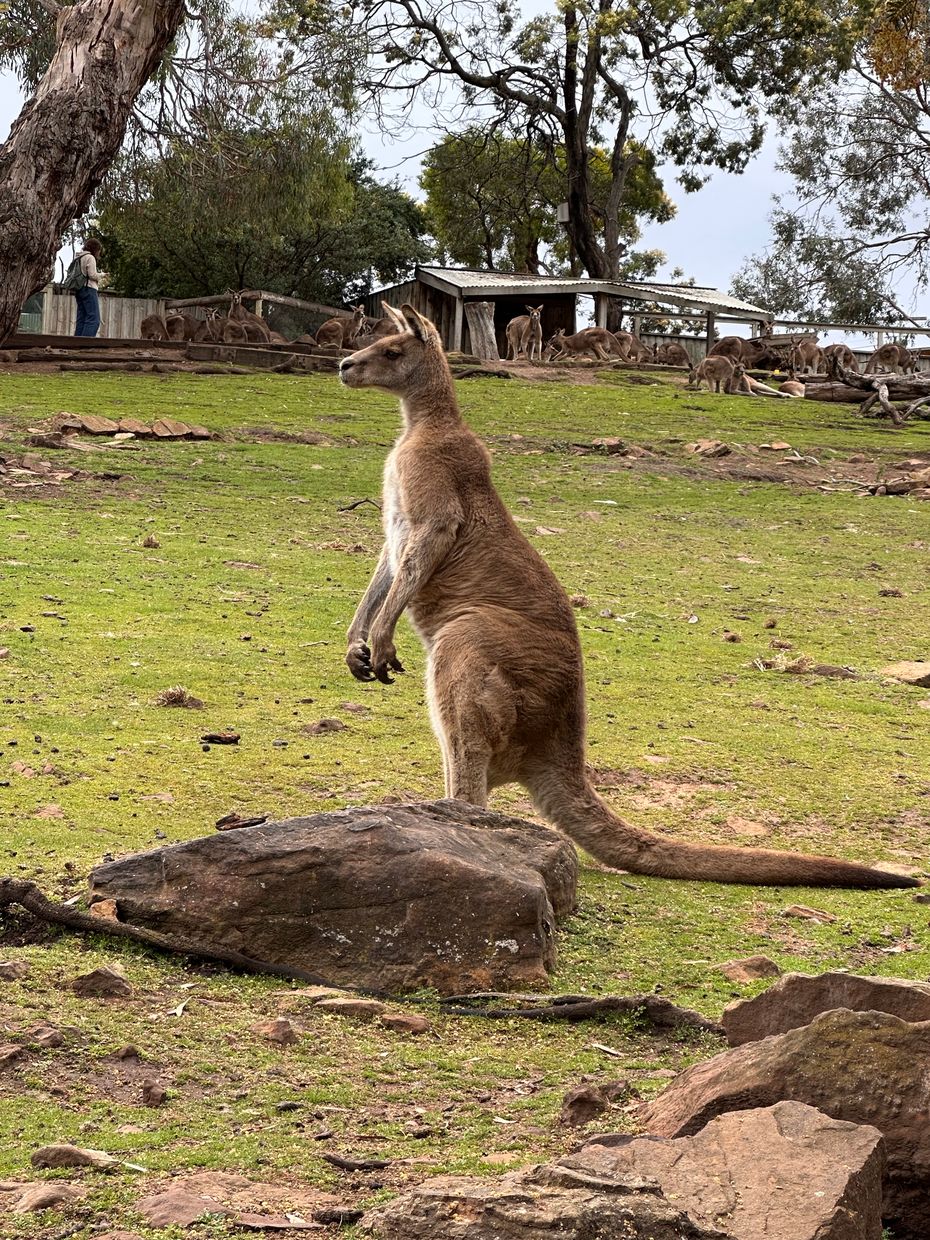Bonorong Wildlife Sanctuary
Nestled in the heart of Tasmania, Bonorong Wildlife Sanctuary stands as a beacon of hope and dedication to the island’s unique wildlife. More than just a refuge, Bonorong is a hub of conservation, education, and rehabilitation. When considering ethical reflections on wildlife sanctuaries, Bonorong’s approach highlights the importance of their role. It operates a 24/7 Wildlife Rescue Service, responding to emergencies involving injured and orphaned animals across Tasmania. This service ensures that wildlife in distress receives immediate care and treatment.
Visiting the sanctuary was an incredible experience that opened my eyes to the vital work being done for animal conservation. However, as with many animal-related tourist attractions, it also stirred a multitude of questions, thoughts, and feelings about the ethical implications of such endeavors. This blog aims to explore these reflections and the broader conversation around wildlife sanctuaries.
At Bonorong, they focus on more than just rescue. The sanctuary rehabilitates animals with the ultimate goal of releasing them back into their natural habitats, where they can continue to thrive. For animals that cannot be released due to injuries or dependency on human care, Bonorong provides them with a safe and enriching environment to live out their lives with dignity.
In addition to their rescue and rehabilitation efforts, Bonorong actively involves itself in educational programs that foster a greater understanding of Tasmania’s unique ecosystems and the challenges its native species face. Through engaging tours and interactive experiences, visitors gain insights into the importance of conservation and learn the steps needed to protect the island’s natural heritage for future generations.

A Fascinating Tour: Discovering Unique Wildlife
The tour at Bonorong was both educational and inspiring. I learned fascinating facts about Tasmanian devils, such as their tiny joeys, which are the size of a grain of rice at birth. In the mother’s pouch, only four joeys can survive, as they must latch onto one of the four available nipples. This intense competition sometimes leads to joeys being inadvertently consumed by their mother, highlighting the harsh realities of survival in the wild.
Wombats, another native species, possess their own unique characteristics. As they grow into teenagers, wombats can become quite aggressive, often expelling their mothers from the den. Interestingly, wombats have a tough, cartilaginous plate on their rear end, serving as a protective shield against predators.

I also discovered more about echidnas, which despite their spiky appearance, are not related to hedgehogs or porcupines. This is a remarkable example of convergent evolution. Interestingly, humans share a closer genetic relationship with hedgehogs than with echidnas!
The Fight Against Tasmanian Devil Tumour Disease
One of the sanctuary’s critical roles is addressing the Tasmanian devil facial tumour disease—a contagious cancer that could potentially eliminate the species. Bonorong plans to offer space and resources for future research efforts aimed at developing a vaccine. While the possibility of animal testing presents a moral dilemma, the potential to save a species from extinction underscores the importance of these initiatives.

Ethical Considerations: Balancing Animal Welfare and Conservation Needs
Wildlife sanctuaries often face complex ethical dilemmas as they strive to balance the immediate needs of individual animals with broader conservation goals. At Bonorong, these challenges are evident in several key areas, including the care of non-releasable animals, breeding programs, and the role of animal ambassadors.

Many sanctuaries house non-releasable animals that cannot survive in the wild due to injuries or human habituation. While these sanctuaries provide essential care and safe havens, they also raise ethical questions about captivity.
Breeding programs are vital for the survival of endangered species, helping to increase population numbers and maintain genetic diversity. However, the ethics of breeding animals in captivity must be considered carefully, balancing the needs of conservation with the values of animal welfare.
Ambassador animals play a significant role in educating the public and raising awareness about conservation challenges. These programs highlight the importance of preserving natural habitats and species, but they also provoke thought about the moral implications of using animals for human education.
Navigating the Moral Dilemmas of Wildlife Tourism
Tourism is a necessary component for many sanctuaries, providing crucial funding for their operations and conservation projects. This creates a delicate balance between ensuring animal welfare and engaging visitors meaningfully. By prioritising transparency and ethical practices, sanctuaries can maintain this balance effectively.
In conclusion, visiting wildlife sanctuaries like Bonorong serves as a catalyst for thoughtful reflection on the complexities of conservation. It encourages us to consider our roles in supporting ethical wildlife tourism and how we can contribute positively to conservation efforts while aligning with our values.

Join the Cause
Feel inspired by Bonorong’s work? Support their efforts by donating, volunteering, or raising awareness about wildlife conservation. Your actions make a difference in protecting our planets precious wildlife and ensuring a future where both animals and humans thrive together.
Before you go…
If you’re vegan or just looking for cruelty-free supplements, chocolate, or meal kits, here are a few brands worth checking out.
Dr. Vegan make fully plant-based supplements with clear ingredients. Use code DR15 to get 15% off.
The links above are affiliate links. If you click through and buy something, I may earn a small commission at no extra cost to you.

